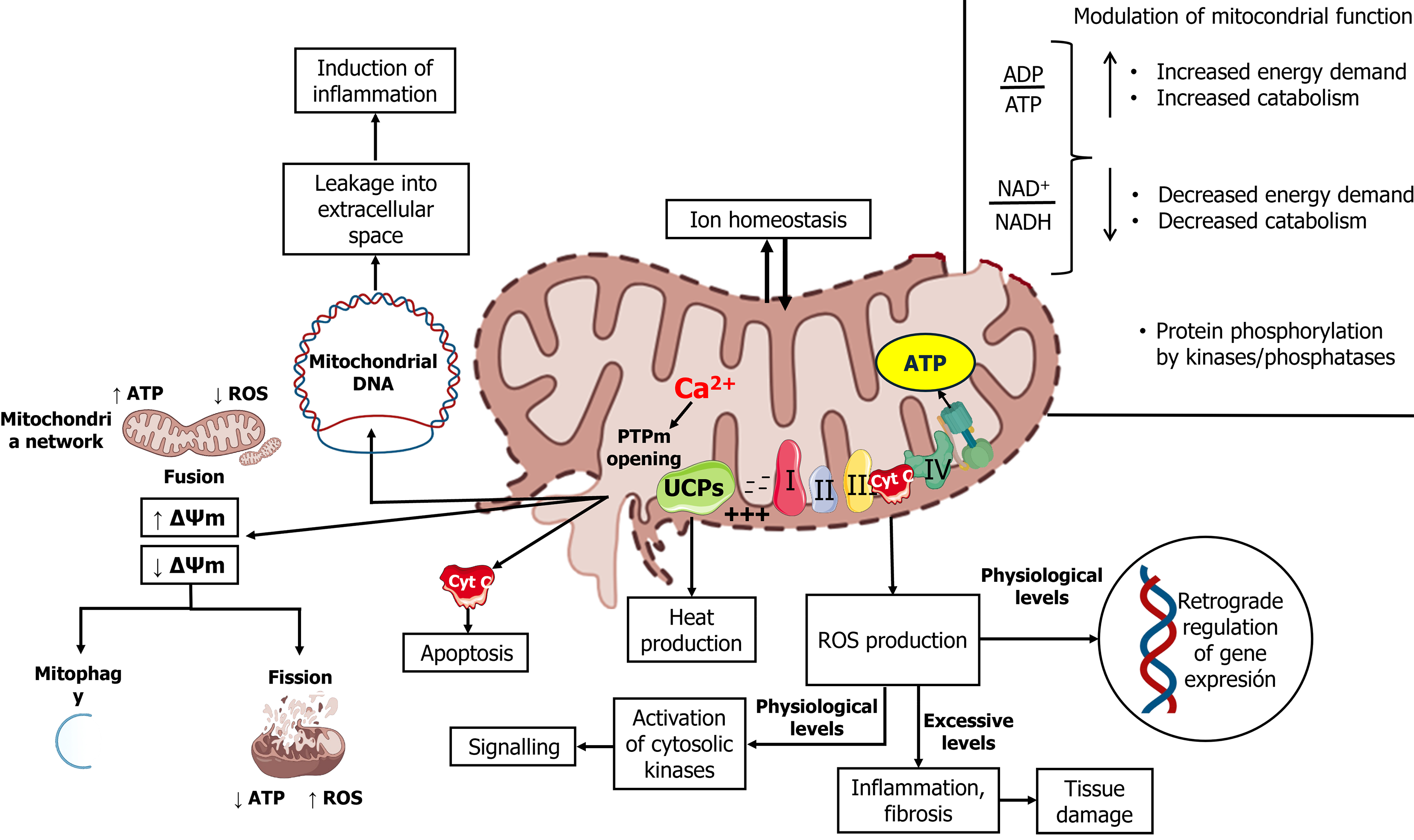Copyright
©The Author(s) 2024.
World J Diabetes. Oct 15, 2024; 15(10): 2015-2021
Published online Oct 15, 2024. doi: 10.4239/wjd.v15.i10.2015
Published online Oct 15, 2024. doi: 10.4239/wjd.v15.i10.2015
Figure 1 Complexity of mitochondrial functioning.
Conventionally, mitochondria are recognized as central to oxidative metabolism for ATP production via the electron transport chain, regulated by mitochondrial energy levels and kinase/phosphatase systems. However, mitochondria also play roles in maintaining ionic homeostasis and various physiological functions. The physiological production of mitochondrial reactive oxygen species (ROS) modulates cell signaling and gene expression, while excessive ROS production can lead to detrimental processes such as inflammation and fibrosis. Uncontrolled opening of the mitochondrial permeability transition pore releases cytochrome c and mitochondrial DNA, promoting apoptosis and inflammation, respectively. These events are mitigated through processes like cell fission and mitophagy to prevent the transmission of mitochondrial DNA mutations to healthy mitochondria. Conversely, mitochondrial fusion into networks enhances mitochondrial function and reduces ROS production. ROS: Reactive oxygen species; Cyt C: Cytochrome c; UCPs: Uncoupling proteins.
- Citation: Cortés-Rojo C, Vargas-Vargas MA. Don´t give up on mitochondria as a target for the treatment of diabetes and its complications. World J Diabetes 2024; 15(10): 2015-2021
- URL: https://www.wjgnet.com/1948-9358/full/v15/i10/2015.htm
- DOI: https://dx.doi.org/10.4239/wjd.v15.i10.2015









